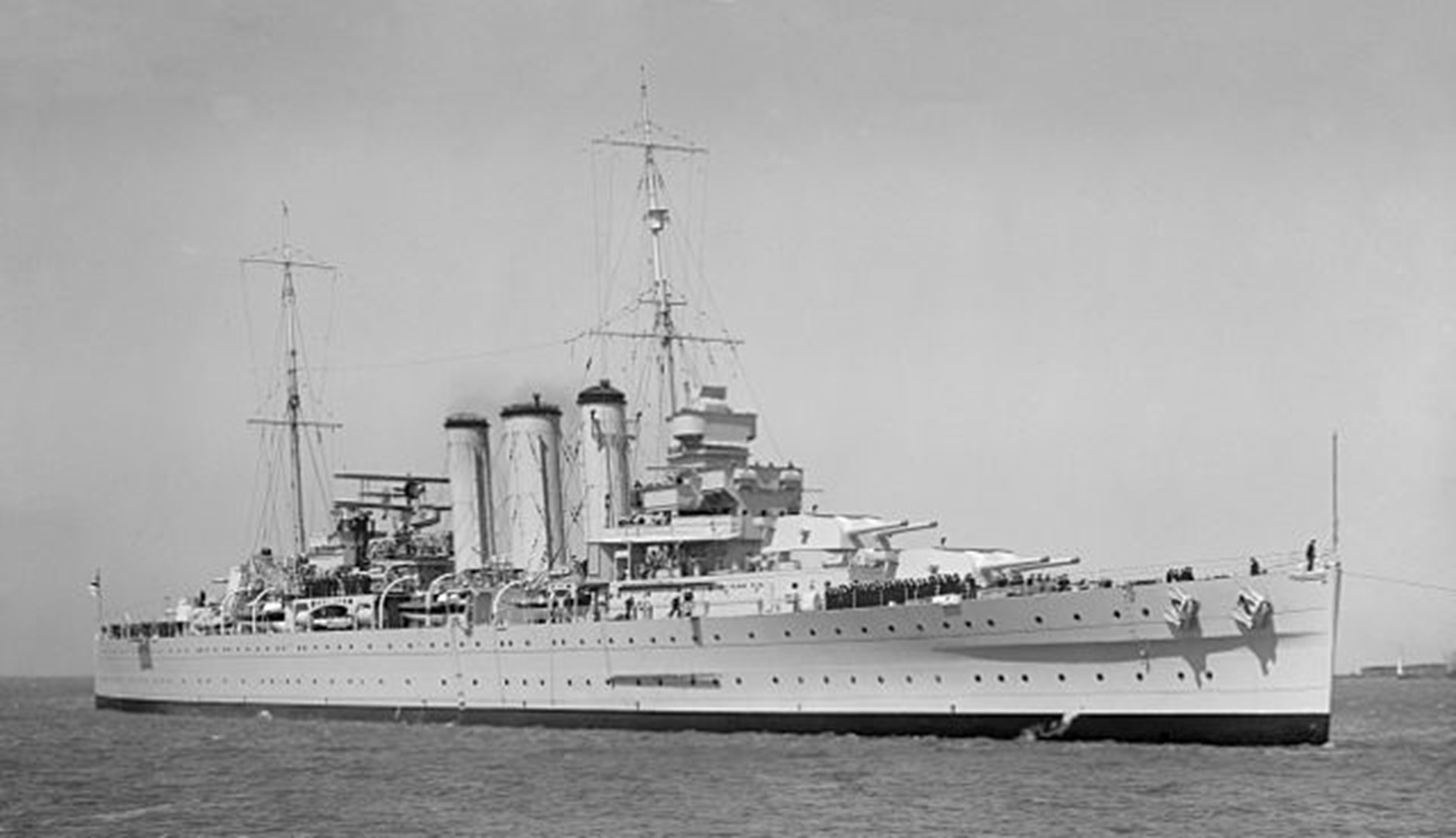- Author
- Gregory, Mackenzie J.
- Subjects
- Occasional papers, Naval Engagements, Operations and Capabilities, History - WW2, WWII operations
- Tags
-
- RAN Ships
- HMAS Australia II
- Publication
- December 1993 edition of the Naval Historical Review (all rights reserved)
In September 1940 I was eighteen and had already served as a Midshipman in H.M.A.S. AUSTRALIA for over a year. We had been attached to the Home Fleet based in the desolate North of Scotland at Scapa Flow.
AUSTRALIA had carried out patrols between the Faroe Islands, and Greenland; sweeps into the Greenland sea which took us to Bear Island less than 1,000 miles from the North Pole; and patrols to the coast of Norway off Tromso. The weather was usually cold, and often we encountered extremely rough seas and gale force winds. Life at sea was not pleasant. One could rarely keep warm. How we yearned for some lovely Australian sunshine, but Australia seemed as far away as the moon, our only link with home being mail; and that months old by the time we received it.

The last day of August found AUSTRALIA en route to Greenock on the Clyde. We passed a torpedoed liner, the VOLENDAM, being towed stern first by an Admiralty tug, whilst the liner was well down by the bows.
We entered the Clyde at 1100 the next day, and as the ship proceeded up river I found the scenery quite beautiful – a contrast from Scapa Flow. On both banks, the hills brilliantly green rose up into the distance; we passed through the protective boom, and anchored off Greenock.
On 5th September we embarked French flying officers and two ‘Cauldron Renault’ aircraft – quite similar to our Gipsy Moth.
The next day we cleared the Clyde, and turned south, proceeding under sealed orders. For the next week we continued on a south west or southerly course, with the weather becoming decidedly warmer, as we shook off the cold Scottish and North Atlantic weather.
A convoy of seven French ships was passed – this occasioned me to research the convoy system. Without its Merchant Navy Fleet, Britain could not exist. 75 per cent of all food stuffs needed were imported. Early in the war, German U Boats took a heavy toll of merchant ships, and the convoy system was soon initiated.
During the first three months of the war, for every 1,000 tons of merchant shipping sunk, 110,000 tons reached port – and 140,000 tons left Great Britain. Up to the end of July only 66 merchantmen were sunk out of 30,009 ships convoyed.
Even allowing for the increased menace of the magnetic mine, U Boat and aircraft attacks, Germany had thus far failed in her objective to blockade British trade.
We reached Freetown, West Africa on 17th September, the weather was now glorious – and we basked in the welcome sunshine.
In company was a large naval force: BARHAM, RESOLUTION, ARK ROYAL, ARGUS, DEVONSHIRE, VINDICTIVE, ALBATROSS, seven destroyers, two hospital ships, two French gunboats, and a French sloop. A number of troopships were present carrying landing punts. These were flat bottomed, fitted with twin propellers that ran within tunnels to prevent fouling, and twin rudders are also housed within the tunnels.
The punts only drew 18 inches, and were made from bullet proof steel, and had a speed of 12 knots. The troops were Free French soldiers under the command of General de Gaulle, and a number of Royal Marines. The two French aircraft we had transported,, together with the French airmen were all transferred to the ARK ROYAL.
We embarked 8″ high explosive shells, so it looked as if we were preparing for a bombardment. We sailed from Freetown, and turned north, meeting the British cruiser CUMBERLAND at 0800 the next morning, 19th September. She had been on patrol off Dakar, and we took over these duties.
Churchill and his war Cabinet had decided to assist de Gaulle in a landing of Free French forces in West Africa. Our destination `Dakar’.
Dakar is the main port of French West Africa, ideally placed on the trade route, and, until the capitulation of France extensively used by British merchant ships.However, Dakar remained loyal to the Vichy Government, and was now available as a base for enemy submarines, and merchant raiders operating against our trade and navy. De Gaulle believed he could win Dakar away from Vichy, and move them over to the Free French cause.




